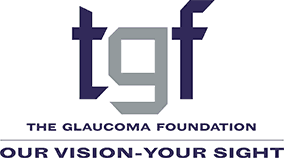~Doctor, I Have a Question. Are visual field tests reliable? What can a patient do to help ensure the quality of the test?~
Question answered by:

Pressure checks, imaging, and visual field tests are all important components for how we monitor glaucoma. Standard Automated Perimetry (SAP), the visual field test, is a crucial part of glaucoma diagnosis and monitoring. It remains the gold standard to measure visual function in glaucoma and to track progression and is the measurement that best correlates with vision-related quality of life.
It’s an important test that tells us a lot about the severity of the disease and it matters when we make clinical decisions. It’s also worth noting that the FDA currently only accepts visual field endpoints in trials for new glaucoma drugs aimed at slowing progression.
How reliable is the test? The testing device is programmed to know what you should see. It knows what you may not be seeing, and it will go back and test things several times. Because there is some variability, your doctor will look at the test results and if there’s a change, will probably repeat the test before making any significant change in your treatment plan.
Make sure to ask your doctor to see and explain the printouts of your tests. They contain lots of information including some objective measurements regarding the quality of the test.
Four indices that are built into the test aid in objectively evaluating test reliability. For each, there are values that the machine has defined as adequate.
The most important is the false positive index, which measures the tendency of “trigger happy” patients to press the response button even when no stimulus has been seen – the results may look better than they really are.
Conversely, false negatives are identified when the patient does not respond to a light stimulus that should have been detected, based upon earlier responses. The patient may not be paying attention; the results may look worse than they really are.
A third index measures fixation losses. The patient must look straight ahead at the fixation light throughout the test while lights of different intensities flash from random points in their visual field. The SAP device monitors the ability of the patient to maintain a consistent straight-ahead gaze.
A final gaze tracking index monitors if your eyes are moving—blinking is ok but moving all the time is not good.
And yes, there are also things the patient can do to improve the quality of the test.
- Practice for the test. There are some new technologies that allow patients to do a visual field test online at home. It’s a good way to get used to the test, and be more relaxed about it in the doctor’s office. The more tests you take, the better you get at it.
- Get a good night’s sleep beforehand and pick a time of day when you can focus and feel alert. If you are not feeling well, or fatigued, let your doctor know. Fatigue can affect the quality of the test.
- Use artificial tears to lubricate your eyes just before your test – dry eyes can make your vision blurry.
- Make sure your eye doctor has your most recent lens prescription for use in the test.
- Be aware that sometimes the screen won’t show you anything. Don’t start hitting the button anyway; that can cause false positives.
- Feel free to blink during the test. The machine detects when the patient is blinking and takes that into account.
- You can ask the technician to pause the test. In many cases, just pausing for a few seconds will help provide a more reliable test result.
Gustavo De Moraes, MD, PhD, MPH is an Associate Professor of Clinical Ophthalmology at Columbia University Irving Medical Center, Attending Physician at New York Presbyterian Hospital, Chief Medical Officer at Ora Clinical, Inc.
